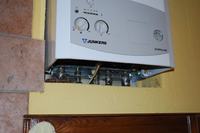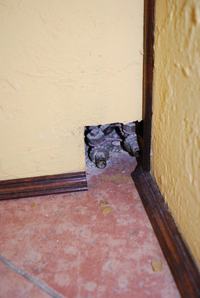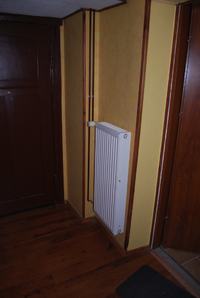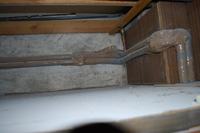Hello!
In the apartment that was bought recently and in which I live, a Junkers Euroline 2-function gas stove is installed. It supplies domestic water to all taps (there is no tank - it works as a flow-through type) and radiators. The problem is that one of the radiators is located in the corridor that connects the apartment with an additional room (belonging to this apartment). The corridor, however, has not been part of the apartment for some time and I have to get rid of the radiator. The cut-off and soldering of the plugs on copper pipes is not a problem, but you need to drain the water from part of the installation, which I have never done and I would not like to make a mess.
The stove is mounted on the wall, all radiators in the apartment and their installation are below the level of the stove. 2 pipes come out of the apartment and are led to / under the ceiling; those in the corridor separate into a radiator in the corridor and this additional room. The radiators are as high as the rest in the apartment. Water needs to be drained from the pipe section above the stove. At the lowest point of the installation, close to the stove, there are probably drain and filling valves (in the photo), but it seems to me that the water can be drained at the radiators in the corridor and possibly this additional room. I am asking for help and advice on how to go about the matter. Where to drain the water or close the valves at the stove, how to then fill the installation and vent it (at the highest point of the installation at the ceiling in the corridor, there is an air vent, of course also in each radiator, it seems there is also a vent valve in the boiler in the furnace). There is a valve for refilling water in the central heating installation next to the stove - can this valve be used to fill the entire installation or is the water refilled through the valves shown in the photo?
I am adding photos - they may not give much, but they can illustrate something for someone.




First, the stove, drain and vent valves (hard access), an unwanted radiator, connecting to it along with a vent.
I will be grateful for your help, because while I am fluent in electronics, this tubing is complicated for me .
.
Regards
In the apartment that was bought recently and in which I live, a Junkers Euroline 2-function gas stove is installed. It supplies domestic water to all taps (there is no tank - it works as a flow-through type) and radiators. The problem is that one of the radiators is located in the corridor that connects the apartment with an additional room (belonging to this apartment). The corridor, however, has not been part of the apartment for some time and I have to get rid of the radiator. The cut-off and soldering of the plugs on copper pipes is not a problem, but you need to drain the water from part of the installation, which I have never done and I would not like to make a mess.
The stove is mounted on the wall, all radiators in the apartment and their installation are below the level of the stove. 2 pipes come out of the apartment and are led to / under the ceiling; those in the corridor separate into a radiator in the corridor and this additional room. The radiators are as high as the rest in the apartment. Water needs to be drained from the pipe section above the stove. At the lowest point of the installation, close to the stove, there are probably drain and filling valves (in the photo), but it seems to me that the water can be drained at the radiators in the corridor and possibly this additional room. I am asking for help and advice on how to go about the matter. Where to drain the water or close the valves at the stove, how to then fill the installation and vent it (at the highest point of the installation at the ceiling in the corridor, there is an air vent, of course also in each radiator, it seems there is also a vent valve in the boiler in the furnace). There is a valve for refilling water in the central heating installation next to the stove - can this valve be used to fill the entire installation or is the water refilled through the valves shown in the photo?
I am adding photos - they may not give much, but they can illustrate something for someone.




First, the stove, drain and vent valves (hard access), an unwanted radiator, connecting to it along with a vent.
I will be grateful for your help, because while I am fluent in electronics, this tubing is complicated for me
Regards


